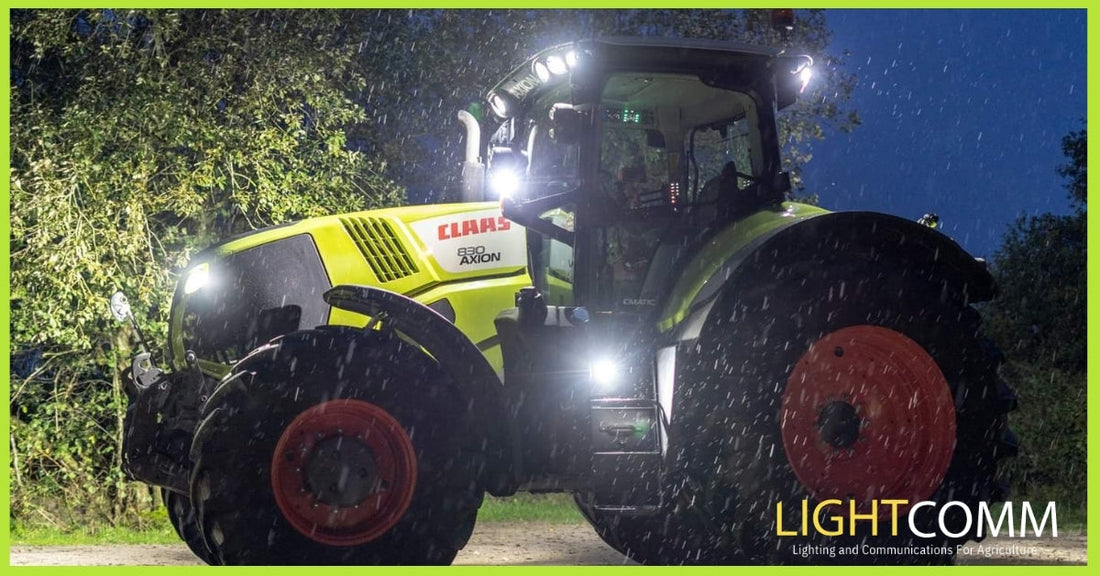Updated on: 2025-10-22
Table of Contents
- 1. Tractor LED work lights: why they matter for night fieldwork
- 2. How-to guide: install tractor LED work lights without drama
- 3. How to choose LED tractor work lights that pull their weight
- 4. Common questions answered about tractor LED work lights
If you’ve ever tried to finish a job after sunset using a flashlight clenched between your teeth, this one’s for you. Tractor LED work lights deliver crisp illumination, sip power from your 12V system, and shrug off dust and rain like a stoic scarecrow. In this guide, we’ll walk through picking, installing, and aiming tractor LED work lights so you see more rows, miss fewer rocks, and keep your battery and sanity intact. We’ll cover LED tractor work lights, a tractor LED light bar, and 12V LED work lights, plus cab-friendly tips and wiring basics that even your future self will thank you for.
Tractor LED work lights: why they matter for night fieldwork
When the sun clocks out but your to-do list doesn’t, tractor LED work lights step in. They produce bright, efficient light at a fraction of the draw of old halogens, helping your alternator breathe easy. With the right mix of flood and spot beams, you get near-field coverage for tasks close to the tractor and long-range throw for lining up rows and spotting obstacles before they audition for your axle.
Today’s LED work lights for tractors offer waterproof casings, corrosion-resistant brackets, and vibration-proof internals. Many are IP67 or higher, which means they can handle dust and brief immersion—handy on muddy days.
Bottom line: with the right setup, tractor LED work lights cut glare, increase visibility, and keep you focused on the job—so you harvest more, bend less, and guess almost never.
How-to guide: install tractor LED work lights without drama
Step 1: Plan your layout and beam patterns
Walk around the tractor and note where you need light: loader area, rear hitch, side rows, or far-field. Sketch a quick map, then decide where floods go (closer-in, wider work) and where spots go (downfield). If you’re going minimal, a pair of waterproof 12V tractor LED work lights on the cab corners is a tidy, versatile start.
Step 2: Pick lights, mounts, and a wiring kit
Choose housings with sufficient lumens for your work style. Bolt-on brackets are best for “set-and-forget.” Grab a fused harness with relay, correct-gauge wire (often 14 AWG for pairs of lights, thicker for higher loads), weatherproof connectors, and heat-shrink. If you need ideas or a quick compare, browse LED work lights. Most of our lights are plug and play and designed to work with your existing setup.
Step 3: Connect switches and tidy the loom
Leave slack for cab tilts or loader movement, but not enough to snag. And avoid running wires next to high-current lines to reduce noise.
Step 4: Aim, test, and banish glare
At dusk, park on level ground and aim floods slightly downward to prevent self-blinding reflections off the hood and fenders. Angle spots so their hot zones overlap in the distance without crossing your line of sight. Switch lights on one circuit at a time and verify no dimming, flickering. If something’s hot, your wire may be undersized.
How to choose LED tractor work lights that pull their weight
Picking winners isn’t hard when you know what matters. Here’s a quick checklist so you get bright light without extra headaches.
- Lumens and optics: Raw lumens brag; effective lumens deliver. Quality optics put light where you need it. For night plowing, combine floods for near-field visibility with spots for the furthest rows.
- Beam pattern mix: Floods for work zones, spots for lines.
- Voltage: Most tractors play well with 12V LED work lights. If yours is multi-voltage, confirm the lights cover your range.
- Durability: Look for die-cast housings, stainless hardware, and IP67+ sealing.
- Mount style: Bolt-on for permanence.
- Support and parts: Availability of brackets, connectors, and spares saves time later. When in doubt, reach out via Contact.
If you want a quick primer on lighting categories and gear fitment, learn more on the LED Guide page and get a sense of what suits your setup, from a compact tractor to a high-horsepower workhorse.
Common questions answered about tractor LED work lights
What are the best tractor LED work lights for night plowing?
If you prefer fewer housings, waterproof 12V tractor LED work lights with flood / spot combo at the cab corners deliver a versatile pattern. Aim for durable housings, IP67 or higher, and a total lumen output that matches your speed and field size—more speed needs more light.
How do I install tractor LED work lights with no existing lights and what wiring do I need?
Use a fused harness with a relay, run power from the battery or a dedicated accessory post, and ground to a clean chassis or battery negative. Size your wire to the load (14 AWG is common for a pair of medium LEDs; go thicker for more lights). Place the fuse near the power source, and use Deutsch plugs. Keep switch lines separate from high-current lines, and protect everything with split loom and heat-shrink. Finally, test one circuit at a time and check for hot spots—literally—along the harness.
Can I overdo it on lumens?
More lumens help until glare fights back. Too much light at the wrong angle can bounce off panels and dust. Balance output with smart aiming, select optics with good cutoff, and keep hoods and fenders clean so they don’t become surprise mirrors.
Quick reminder: Always follow manufacturer instructions and your machine’s electrical guidelines. Bright fields are great; bright sparks are not.

Orla Murphy writes for Lightcomm.ie, where she mixes farm life, tech talk, and a healthy dose of caffeine. When she’s not testing new lights or chatting with farmers, she’s probably wrangling her dog out of a muddy field or trying to convince her neighbours that radios are still cool.

